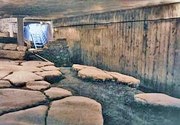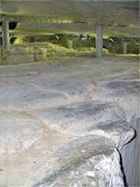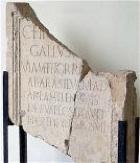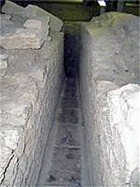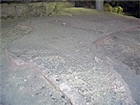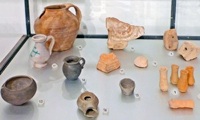Excavations in Piazza Cavallotti in 1983-4 uncovered important remains from ancient Perugia.
Roman Road
The most important find was a stretch of some 20 meters of a road, 4 meters wide, which had been paved with huge stones that are marked by the wheels of carriages. This paving was probably carried out after the Perusine War (40 BC). This road continued towards Via della Stella.
The road has been tentatively identified as Via Thorrena, which is mentioned in a double-sided Latin inscription (early 1st century AD) that was found in 1965 under
Palazzo Danzetta Florenzi and is now in the
Museo Archeologico. This records that the
duovir, Caius Firmius Gallus built and paved, at his own expense, a road called Via Thorrena from the altar of Silvanus (the Roman god of forests) to the "
aream Tlennasis" (perhaps a sacred area in a necropolis).
A road towards what is now Piazza Morlacchi joined this main road under Piazza Cavallotti. It probably formed a crossroads with it, continuing to connect with the road that has been excavated below and parallel to the wall of Palazzo delle Canoniche in Via delle Cantine. This second excavated road, which ran along the side of the central terrace of the ancient city, can be visited from the Museo Capitolare.
Fountain
A water channel runs along the road and probably fed what seems to have been a semi-circular fountain.
This fountain was originally paved in gray marble, but was later extended in the 5th century AD and repaved with a mosaic of tesserae of pink stone. The lead pipe from the channel to the fountain contained an inscription that recorded the name of the craftsman, Iucundus and the donor, Lucius Annius Fortunatus.
Votive Deposit
The Museo Archeologico exhibits a large number of objects that were found dumped in a ditch by the side of the road here. These included:
-
✴a number of asses (coins) from the late 3rd and early 2nd centuries BC (number 1);
-
✴a number of cult objects, including a fragment of an offering bowl (number 6), a small altar (number 11) and a votive breast (number 12) that probably came from a temple that was destroyed during the Perusine War (40 BC).
